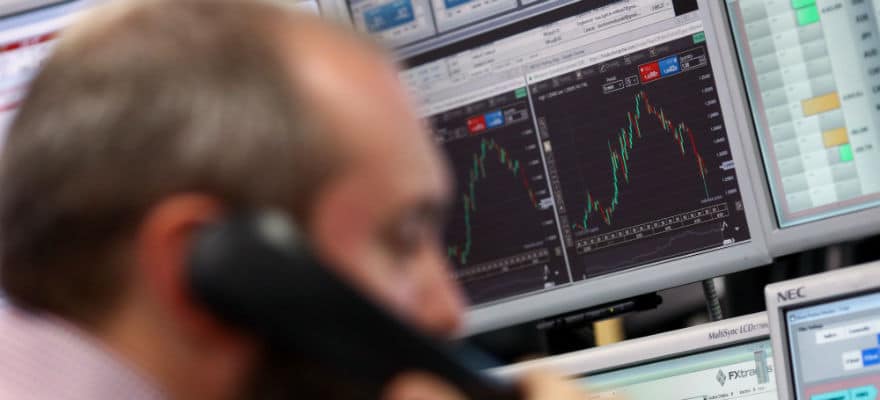Although some investors prefer to trade assets that are trading within a defined range, the risk-reward conditions are not necessarily always favorable. Some individuals prefer to await a breakout from the horizontal trend in order to receive better potential reward conditions while others prefer to simply trade instruments that are exhibiting strong directional trends.
One easy way to understand if an asset has a strong trend or is in the early stages of breaking out is the Choppiness Index. As its name would imply, the Choppiness Index provides users with a good indication of when price action is more or less volatile depending on conditions.
Two Kinds of Price Action
Similar to the Relative Strength Index, the Choppiness Index is an oscillator, meaning the value of the index trends between two levels, mainly 0.0 and 100.0. There are two distinct kinds of price action measured by the Choppiness Index including “choppy”, which refers to sideways trending price action within a range or “not choppy”, which suggests an asset is trending either upwards or downwards over time.
The standard period measured in the calculations is 14 periods, although this can be adjusted depending on the asset class or prevailing market conditions.

In the case of this specific indicator, a value closer to 0.0 suggests the price action is not choppy whereas a value closer to 100.0 refers to price action that is very choppy. There are also two other key levels defined here which include the 62.8 and 38.2 levels, which not coincidentally also represent Fibonacci levels.
Below 38.2 means the price action is less choppy, or more inclined towards a directional trend whereas above 62.8 indicates price action that is choppy and indicative of greater likelihood of horizontal, range-based price action.
Oftentimes, the 62.8 and 38.2 levels are used to determine potential turning points in the price action that can either include a breakout or a strong confirmation that the tradeable asset is involved in a strong trend. As a result of these levels, the two major strategies that draw on the Choppiness index include a trend following strategy when conditions are less choppy and a breakout strategy when conditions are exhibiting more choppiness.
Trend Following Strategy
Using the Choppiness Index oscillator, a strong directional trend is implied by the oscillator staying below the 38.2 level. However, a commonly employed strategy and technique using the oscillator is to establish positions in the same direction of the trade as long as Choppiness Index remains below the 62.8 level.
When it comes to initiating trend following positions, either bullish or bearish, the best place to start is below the 38.2 level. When it comes to exit, the traditional convention is to accept three tests of the 62.8 level, with the third test of the level a signal to exit trend following positions.

Breakout Strategy
When the Choppiness Index remains above the 62.8 at extremely choppy levels for a long period of time, the ideal strategy for using the indicator is waiting for a move below the 62.8 level. The move below the Fibonacci level is an early indication that a directional breakout and new trend are underway.
If the Choppiness Index continues to move towards the 38.2 and below, it is a strong signal to maintain positions in the direction of the breakout trend. However, should the Index rise back above 62.8, it is a strong signal to exit the trade, no matter the momentum in the asset.

Receiving Strategy Confirmation
As in most strategies that are derived from technical indicators, the Choppiness Indicator depends on the price action to serve as confirmation that a trend is continuing or a breakout is underway. Consequently, when looking at a trend following trade, choppiness remaining below 38.2 suggests that the instrument has a strong trend that is likely to continue.
In the event of a breakout which is indicated by the choppiness falling below 62.8, rising trading volumes and early signs of an asset choosing a direction, either upwards or downwards, serve as confirmation of a breakout.

Idan Levitov, AnyOption
This article is written by Idan Levitov, VP trading of anyoption.com. Learn more about the markets here.















